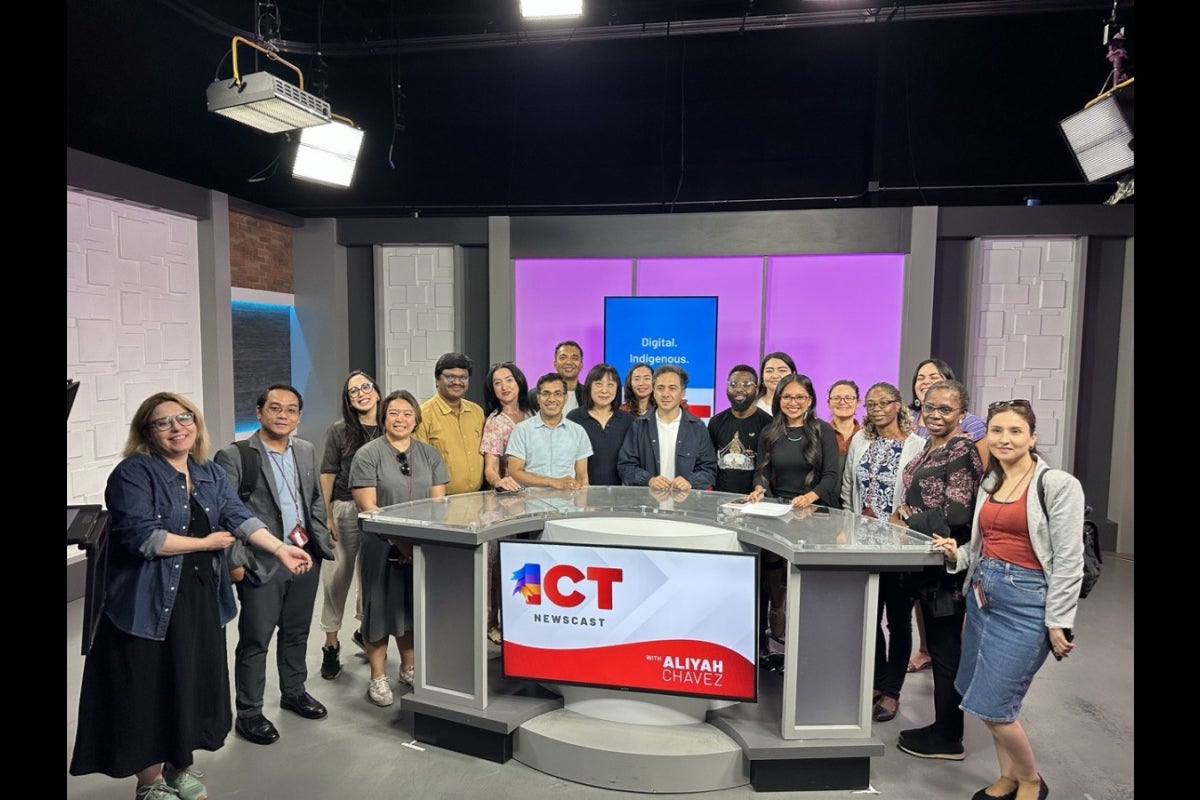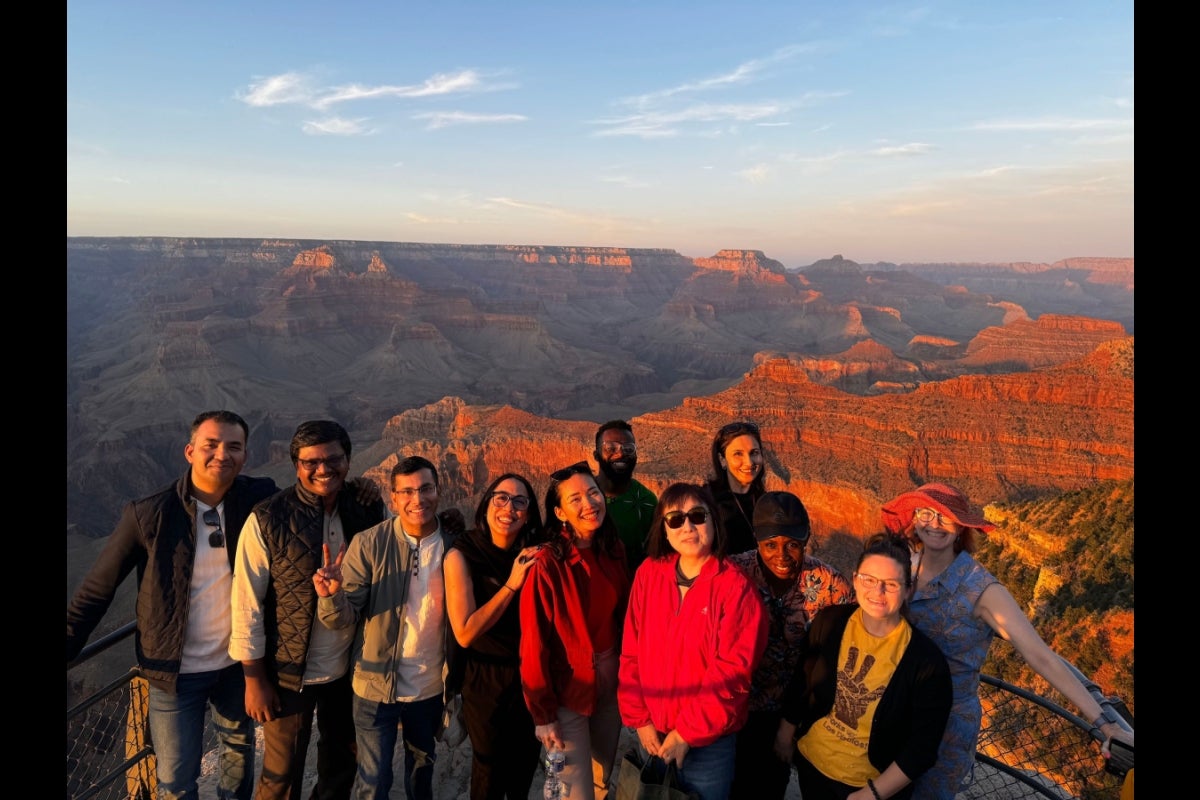International journalism scholars experience a slice of America and ASU
Study of the U.S. Institutes Scholars travel around Arizona, Los Angeles, Washington

Study of the U.S. Institutes (SUSI) Scholars ask questions of a panel at Voice of America.
Throughout her research career, Kaoma Lamba Daka has sought to understand how information literacy is practiced and experienced among Zambian journalists.
However, Daka wanted to expand her perspective of those concepts and knew she could accomplish that goal by studying in the United States.
Daka was one of 18 media professionals and scholars from around the world who attended the Study of the U.S. Institutes (SUSI) Scholars program, which allowed her to spend a portion of her summer delving into these issues at Arizona State University’s Walter Cronkite School of Journalism and Mass Communication.
“That was my interest with coming here to the program; to see how things are done. How is it practiced? How is journalism taught?” said Daka, a lecturer and doctoral student who teaches an information literacy class in the Department of Library and Information Science at the University of Zambia.
SUSI programs are five- to six-week post-graduate academic institutes that feature an intensive residency on a U.S. university or college campus and an educational study tour to a different area of the United States. The institutes at each campus focus on specific topics.
Scholars who attended the institute at the Cronkite School studied media law, media literacy and journalism education. They also conducted independent research projects and participated in discussions on community journalism, technology’s influence on media literacy and misinformation, American democratic institutions and journalism education, with an introduction to the Cronkite School’s signature “teaching hospital” model — focused on hands-on, immersive experiences.
The group spent four weeks in Phoenix and traveled to the Grand Canyon and southern Arizona, including the border city of Nogales. They also attended a content creation workshop and toured ASU FIDM in the Herberger Institute for Design and the Arts in Los Angeles, and visited NPR, Voice of America, the U.S. Capitol and other landmarks in Washington, D.C.
Daka wanted to use the lessons learned through the program to create an information literacy workshop for Zambian journalists.
However, she also gained insight into ways to help her university students after learning about the ASU Charter’s emphasis on inclusion and student success, and attending discussions on how to integrate AI into classroom instruction, she said.
“l’ll try to do things a little differently to see what change I can bring about, to see how I can change my approach in helping the students to succeed (and) to look at them a little differently,” she said. “Because I think I've seen how I've been looked at differently (at the SUSI program), how I have been helped to succeed, how I have been included in the various activities and the various things that we've been able to do, and I'd like to see how I can replicate a little bit of that.”
Lekhanath Pandey, an assistant professor at Tribhuvan University’s Ratna Rajyalaxmi Campus in Nepal, looked forward to implementing a more practical approach to his classroom lessons, which differs from how journalism is usually taught at his university, he said.
“The approach is quite different from my part of the world because our courses are mostly theory-laden,” he said.
Pandey was most impressed by Cronkite’s capstone classes and teaching hospital model emphasizing hands-on experiences for students. He believes his students would benefit from these methods.
“We have also tried some sort of things like this, but it is in a very scattered fashion, not in a holistic approach as the teaching hospital model,” he said. “The theme and the articulation is so impressive here.”



